Remember when the mall wasn’t just a place to shop, but the epicenter of social life? Before online shopping and smartphones changed everything, the local mall was where we hung out with friends, discovered new music, and experienced independence as teenagers. Those bustling retail palaces were cultural landmarks where countless memories were made. Let’s take a nostalgic stroll through the now-extinct mall experiences that defined generations.
1. Meeting Up Without Cell Phones
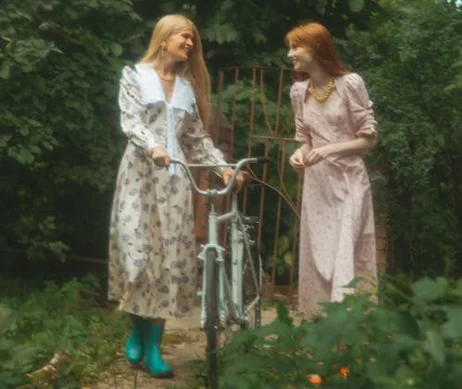
Before smartphones became extensions of our hands, arranging a mall meetup required precise planning and patience. You’d set a specific time and place—usually the food court or by the fountain—and then wait, scanning the crowds for your friends while wondering if you’d somehow missed them. These designated meeting spots became sacred spaces where punctuality mattered and showing up late meant possibly missing your friends entirely. Lifehack Method writes about benefits to rejecting phone use not just for hanging out with friends, but as a crutch throughout the day, left forsaken to live in the moment.
The anxiety of not being able to text “I’m running late” or “Where are you exactly?” created a different kind of social contract among mall-goers. If someone didn’t show up within the agreed-upon window (usually 15-30 minutes), you’d have to make strategic sweeps of their favorite stores or simply accept they weren’t coming. This communication challenge made successfully connecting with friends feel like a genuine accomplishment and made mall meetups more deliberate and appreciated events.
2. Browsing Music Stores for Hours
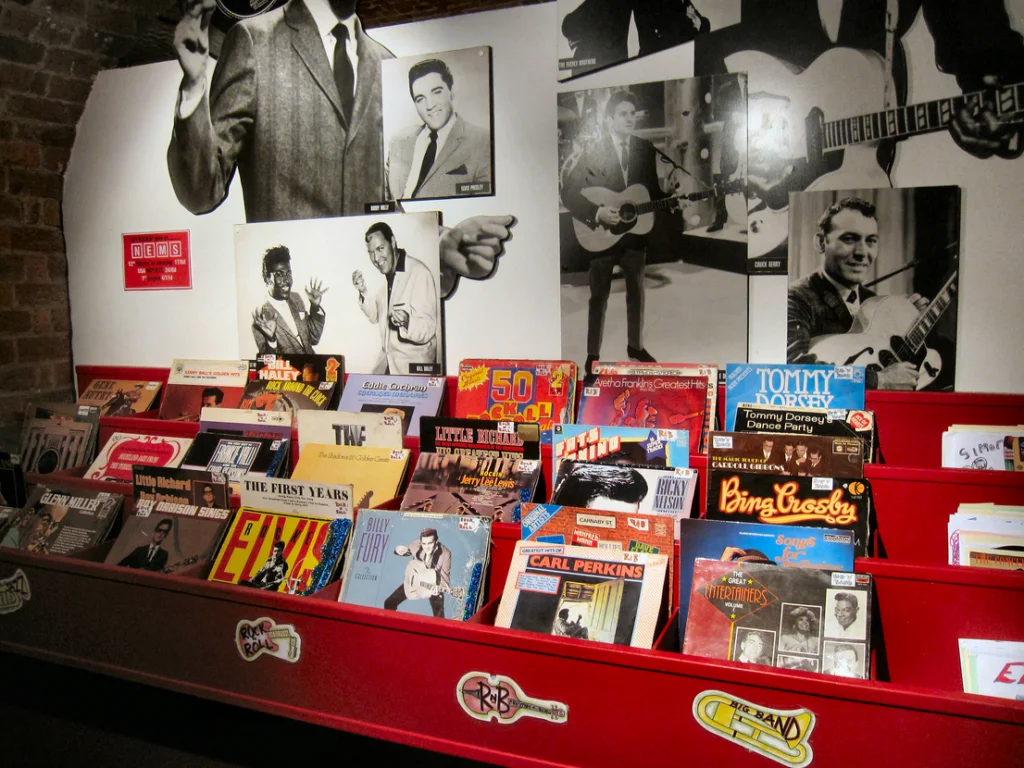
Record stores like Sam Goody, Tower Records, and Musicland were temples of discovery where you could spend entire afternoons flipping through CDs and vinyl. The thrill of finding a rare album or discovering a new artist through listening stations equipped with bulky headphones was a tactile experience impossible to replicate through digital streaming. Store clerks often became trusted tastemakers whose recommendations carried more weight than any algorithm. With Camoin Associates reporting vinyls enjoying a comeback, perhaps the respective stores will be sticking around for longer than expected too.
The ritual of carefully examining album art, reading liner notes, and debating purchases with friends has vanished from the mall landscape. Physical music stores provided communal spaces where music lovers could connect over shared interests and showcase their knowledge, creating a cultural exchange that went beyond commerce. Today’s digital music consumption, while convenient, lacks the sensory experience and social dimension that made mall record stores essential cultural institutions for generations of music fans.
3. Getting Film Developed at the Photo Counter
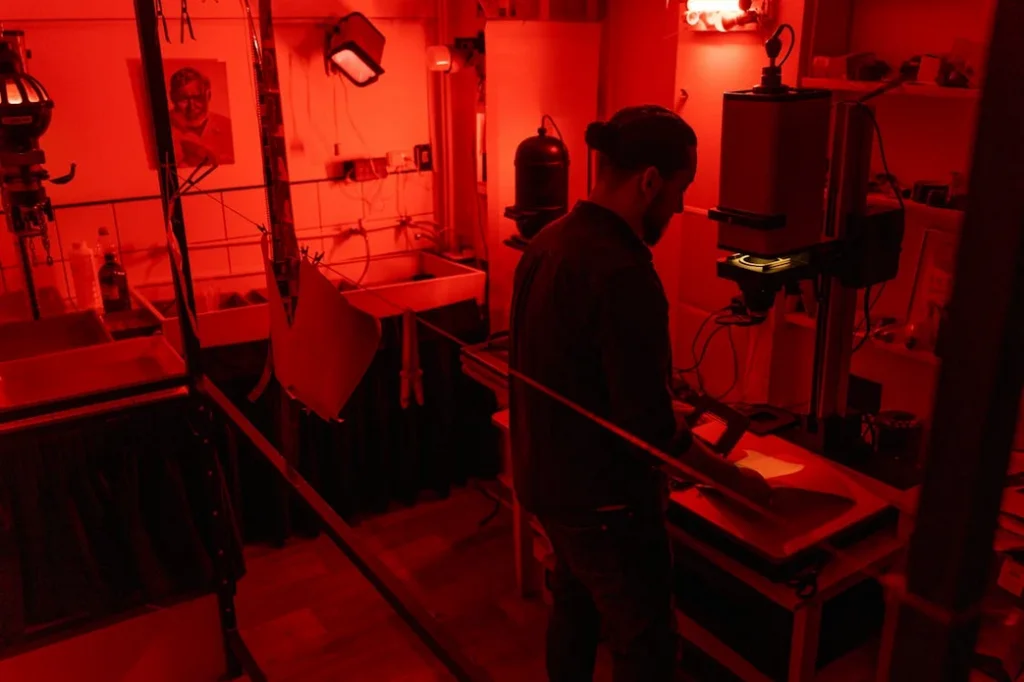
Nothing built anticipation quite like dropping off a roll of film and returning hours later to discover if your photos turned out as hoped. The photo counter, tucked inside department stores or as standalone shops like Fotomat, represented that magical transition point where memories became tangible. The exhilarating moment of opening that envelope of prints—some blurry, some perfect, all surprising—was a shared experience that brought friends together to relive recent adventures. Though smartphones have changed photography forever, The Darkroom writes that disposable cameras are trending again, keeping traditional photography and some of the requisite skills stick around just a bit more.
The process involved patience and investment that digital photography has eliminated, from carefully counting remaining exposures to making difficult decisions about which moments deserved to be captured. Today’s instant gratification of smartphone photos means we never experience the suspense of waiting to see if we captured the perfect moment or the disappointment of discovering someone blinked during an important shot. The photo counter’s disappearance represents a fundamental shift in how we document and share our lives.
4. Visiting Arcades with Pockets Full of Quarters

The cacophony of beeps, buzzes, and electronic music that spilled from mall arcades created an irresistible magnetism for young people with spare change burning holes in their pockets. Arcades like Aladdin’s Castle and Tilt were smoky, carpeted caves where social hierarchies formed around high scores and gaming prowess. The physical experience of manipulating joysticks, mashing buttons, and feeding quarters into hungry machines created a visceral connection to gaming that touchscreens can’t replicate.
These noisy havens fostered in-person community around shared experiences, with crowds gathering to watch skilled players tackle difficult games. The tactile satisfaction of receiving physical tickets from skee-ball machines and redeeming them for prizes at the counter has largely disappeared from the modern mall landscape. While gaming remains popular, the communal, location-based experience of mall arcades has been replaced by online multiplayer environments that connect players globally but eliminate the shoulder-to-shoulder camaraderie of arcade gaming.
5. Drinking Orange Julius as a Special Treat
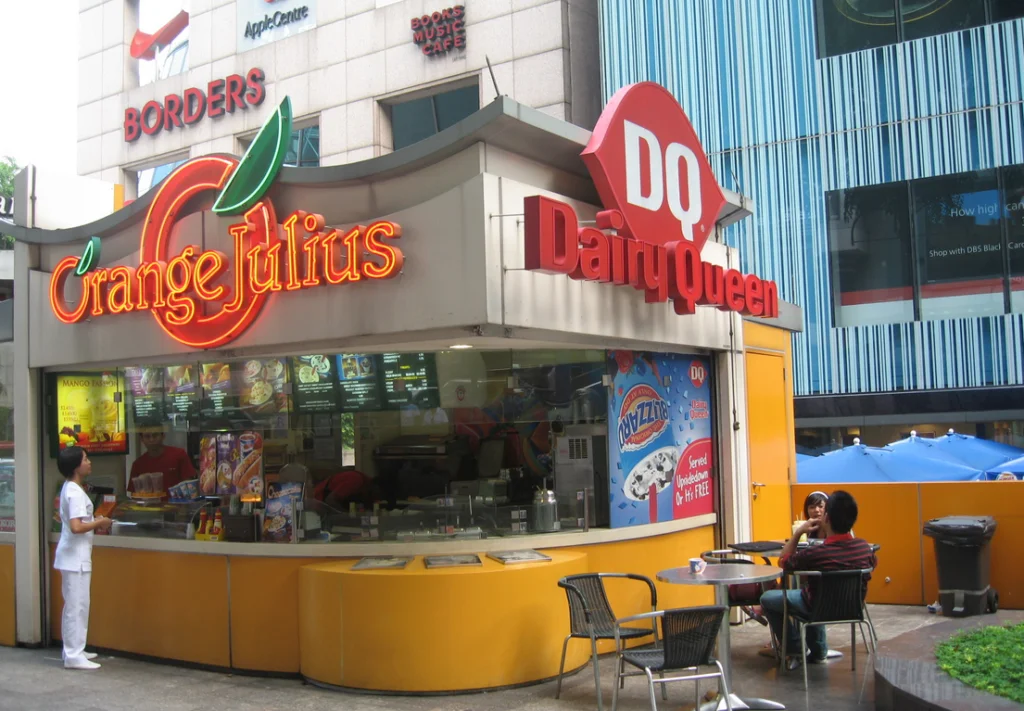
The distinctive frothy orange drink served at mall staple Orange Julius was more than a beverage—it was a retail ritual that marked shopping trips as special occasions. The unique combination of orange juice, milk, vanilla, and ice created in those whirring machines became the unofficial taste of mall adventures for generations of shoppers. Standing in line, watching the cheerful employees blend the signature drink, and then carefully carrying the paper cup through crowds created anticipation that made the first sip especially satisfying.
Mall food court staples like Orange Julius served as affordable luxury items that parents could reasonably say “yes” to after turning down more expensive requests. The shared experience of sipping these sweet treats while people-watching created moments of connection amid busy shopping trips. While some Orange Julius locations still exist, they’ve largely been absorbed into Dairy Queen franchises, and the standalone counters with their distinctive orange branding have mostly disappeared from mall landscapes.
6. Hanging Out at Spencer Gifts with No Intention to Buy
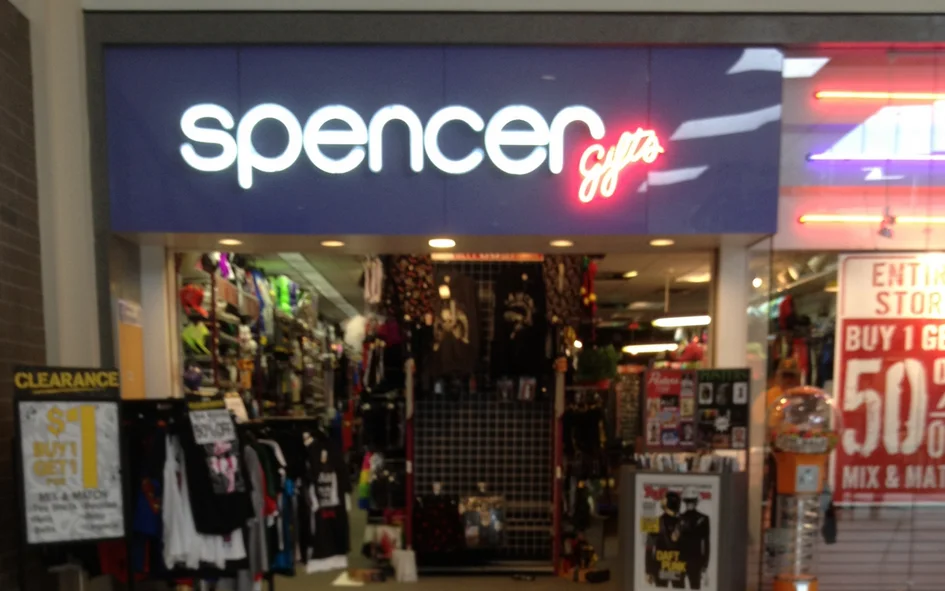
Spencer Gifts occupied a unique place in mall culture as the store where tweens and teens could giggle over risqué novelties and test boundaries in a space that felt delightfully adult-adjacent. The front half contained seemingly innocent lava lamps and posters, while the back half housed gag gifts and items that prompted nervous laughter from young browsers. The distinctive smell—a combination of incense, plastic packaging, and the ozone from plasma balls—created an immediately recognizable sensory experience.
Store employees developed legendary patience for groups of non-paying younger customers who would spend hours activating every noise-making gadget and testing every practical joke item. For many young mall-goers, Spencer’s represented a safe rebellion—a place to flirt with adult humor without actually crossing into truly forbidden territory. The experience of browsing Spencer’s with friends was a cultural touchstone that introduced many to adult concepts through the filter of novelty and humor, creating shared memories of performative shock and genuine discovery.
7. Getting Ears Pierced at Claire’s While Friends Watched
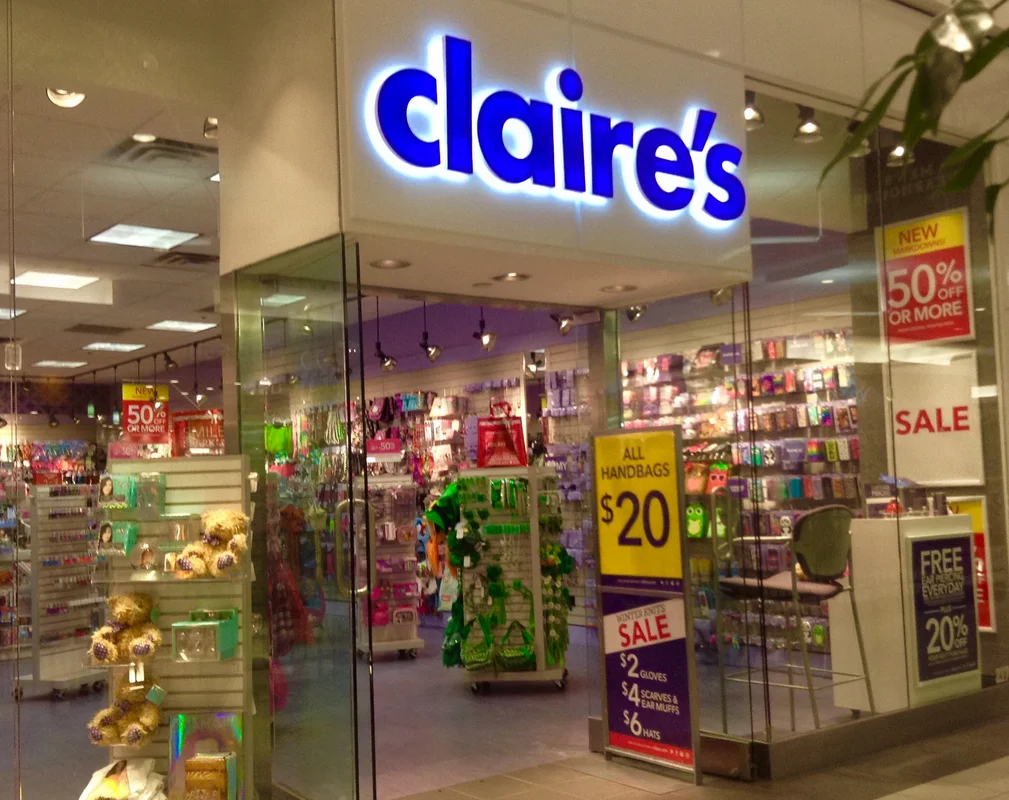
Claire’s earring piercing chairs, prominently visible to all mall passersby, turned a personal milestone into public performance art. Friends would gather to provide moral support, document the moment with disposable cameras, and sometimes hold hands during the momentous click of the piercing gun. The nervous anticipation, the quick pinch, and the proud aftermath created a rite of passage that transformed ordinary shopping trips into memorable life events.
The piercing station’s fishbowl-like visibility meant your bravery (or tears) had an audience, adding social pressure to an already emotionally charged experience. Choosing your first pair of earrings from the spinning display case required serious deliberation, as these would be your constant companions during the crucial six-week healing period. While ear piercing services remain available today, the communal, public nature of the mall piercing experience—with its witnesses and accompanying food court celebration—has largely been replaced by more private experiences at specialized piercing studios.
8. Browsing Bookstores Without Amazon Price Comparison
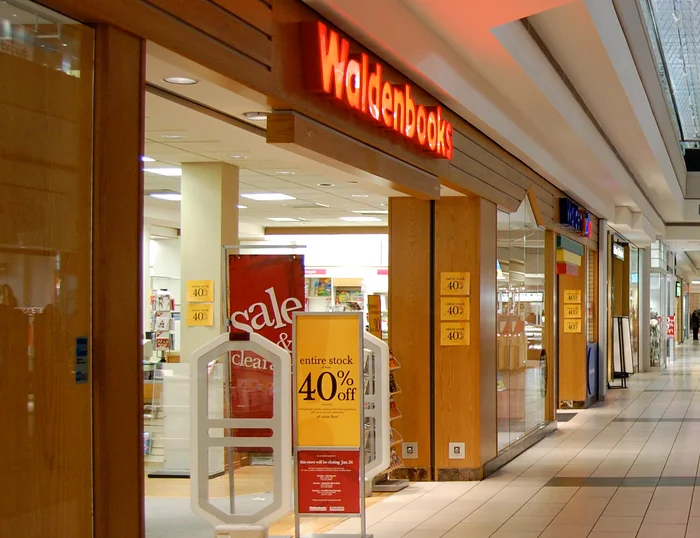
Waldenbooks, B. Dalton, and other mall bookstores offered literary worlds to explore without the distraction of price comparison apps or online reviews. The serendipity of discovering new titles by physically browsing shelves created reading journeys that algorithm-based recommendations rarely replicate. These compact, well-curated stores managed to pack literary universes into relatively small retail footprints, with knowledgeable staff who could guide you to perfect reads based on actual conversation rather than purchase history.
The tactile experience of opening books, reading random passages, and judging covers created a sensory dimension to book selection that online shopping eliminated. Mall bookstores served as cultural touchstones where people discovered new releases, met authors during signings, and bonded with fellow readers browsing the same sections. While some standalone bookstores have survived the digital transition, the ubiquitous mall bookstore chains have largely disappeared, taking with them the spontaneous literary discoveries that once punctuated shopping trips.
9. Watching Demonstration Products You’d Never Buy
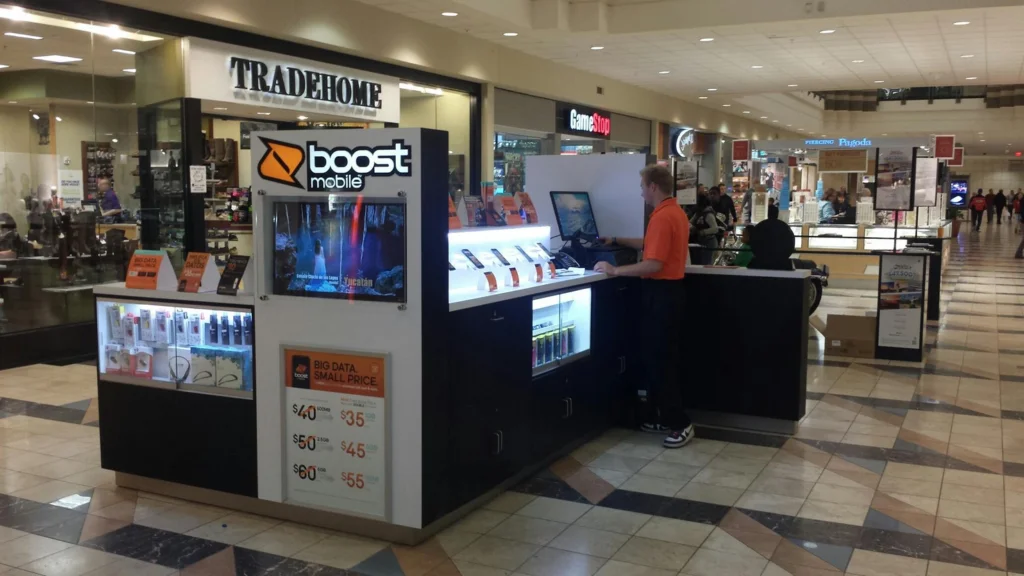
Mall walkways once featured kiosks with charismatic salespeople demonstrating seemingly miraculous products that stopped shoppers in their tracks. From remote-controlled toy helicopters zooming overhead to Dead Sea salt scrubs magically removing “toxins” from willing volunteers’ hands, these demonstrations created impromptu entertainment throughout the shopping experience. The gathering crowds formed temporary communities united by curiosity and skepticism, creating shared moments among strangers who ordinarily would pass without interaction.
These product demonstrations functioned as free mall entertainment, with particularly skilled presenters developing fan followings who would return to watch multiple performances. The unspoken social contract allowed everyone to enjoy the show without obligation to purchase, though the persuasive demonstrations occasionally converted observers into buyers. Online shopping has eliminated this theatrical dimension of retail, where product presentations doubled as performance art and created memorable characters in the mall ecosystem.
10. Creating Elaborate Wish Lists at FAO Schwarz or KB Toys
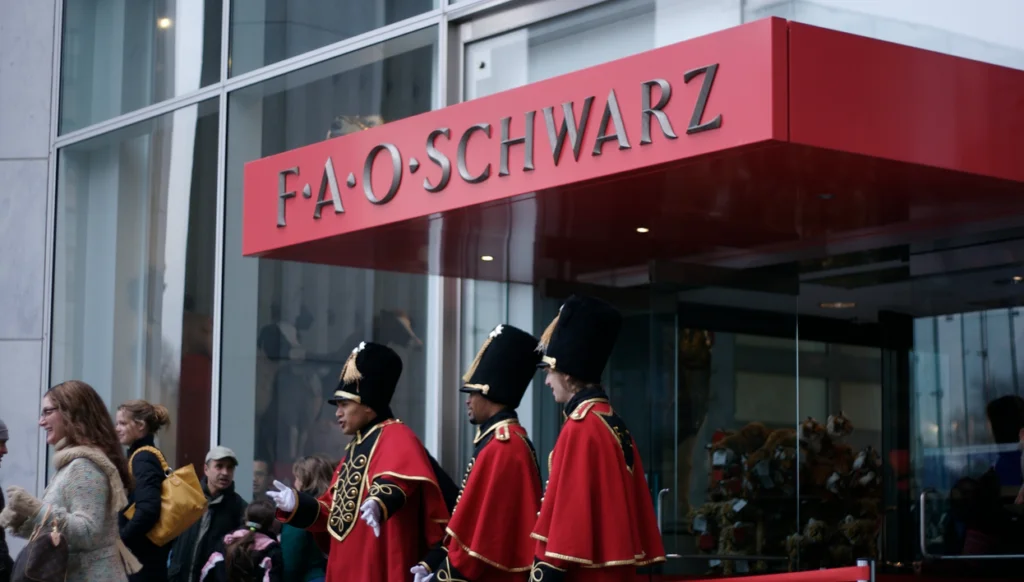
Toy stores like FAO Schwarz and KB Toys functioned as wish-fulfillment laboratories where children could meticulously research and prioritize birthday and holiday gift requests. The full sensory experience—actually holding and testing toys rather than seeing them through screens—created emotional connections to potential purchases that digital browsing can’t replicate. These expeditions often involved negotiations with parents who established clear boundaries (“just looking today”) while children worked to identify their most-wanted items.
The strategic timing of these visits—often scheduled months before birthdays or holidays—created extended anticipation cycles that modern one-click purchasing has largely eliminated. Children learned patience, prioritization, and the value of delayed gratification through these elaborate window-shopping exercises. The disappearance of dedicated toy stores from malls has removed this aspirational shopping experience that helped children develop consumer discernment and appreciation for gifts when they eventually arrived.
11. Navigating Using Physical Directory Maps
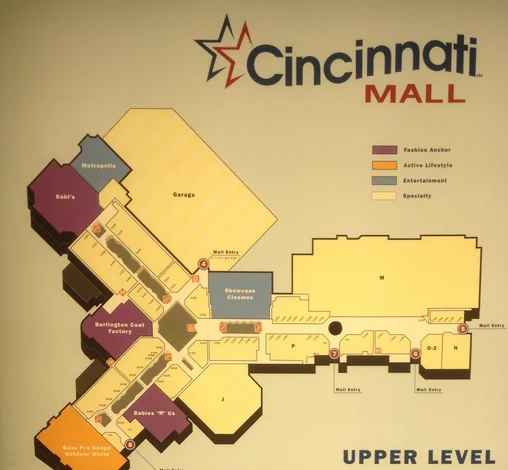
Before smartphones guided our every move, large directory maps stationed throughout malls served as essential navigation tools in these retail labyrinths. The “You Are Here” arrow oriented confused shoppers who would gather around these maps, planning efficient routes between destinations or discovering new stores. Families often designated these maps as emergency meeting locations, creating reassurance for children exploring independence within safe boundaries.
The physical act of memorizing routes or store locations exercised spatial reasoning skills that GPS navigation has rendered largely unnecessary. Mall directories created natural gathering spots where strangers would help each other locate specific stores or recommend alternatives. The replacement of these physical landmarks with digital wayfinding has eliminated these small moments of community and the shared vulnerability of admitting you’re lost.
12. Glamour Shots Makeovers with Friends
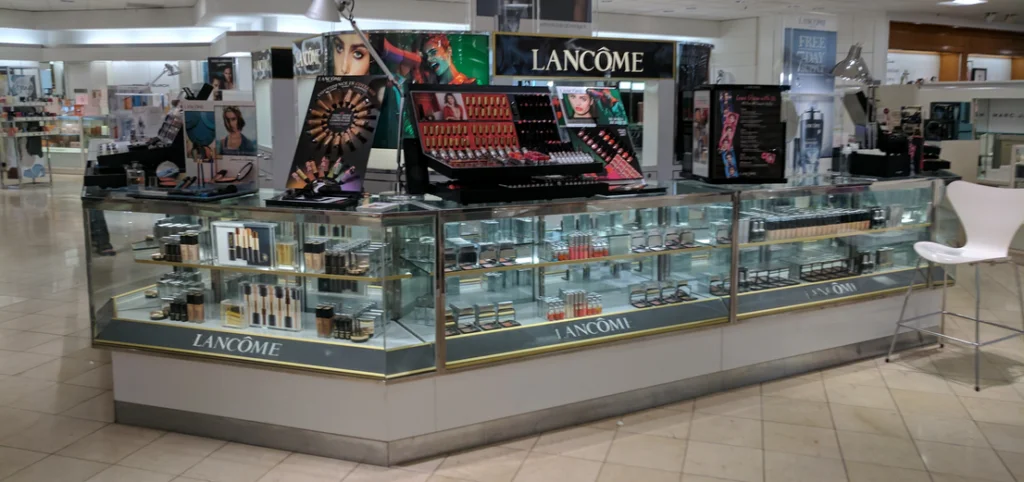
Few mall experiences captured 1980s and 1990s excess better than Glamour Shots studios, where ordinary people transformed into soft-focus fantasy versions of themselves through dramatic makeovers. These photo sessions turned shopping trips into special occasions, complete with professional makeup, hair styling, costume accessories, and theatrical posing guidance. The resulting photos—with their distinctive gauzy filters, strategic lighting, and larger-than-life styling—created alternate reality versions of mall-goers that became cherished (and eventually hilarious) mementos.
The shared experience of watching friends undergo dramatic transformations and encouraging increasingly bold poses created memorable bonding experiences. These studios democratized the professional photography experience that was previously available only for special occasions like weddings or graduations. Social media filters have replaced the physical transformation and professional guidance that made Glamour Shots an event worth planning and saving for, eliminating the collaborative, in-person nature of these mall portrait sessions.
13. Getting a First Job at the Food Court
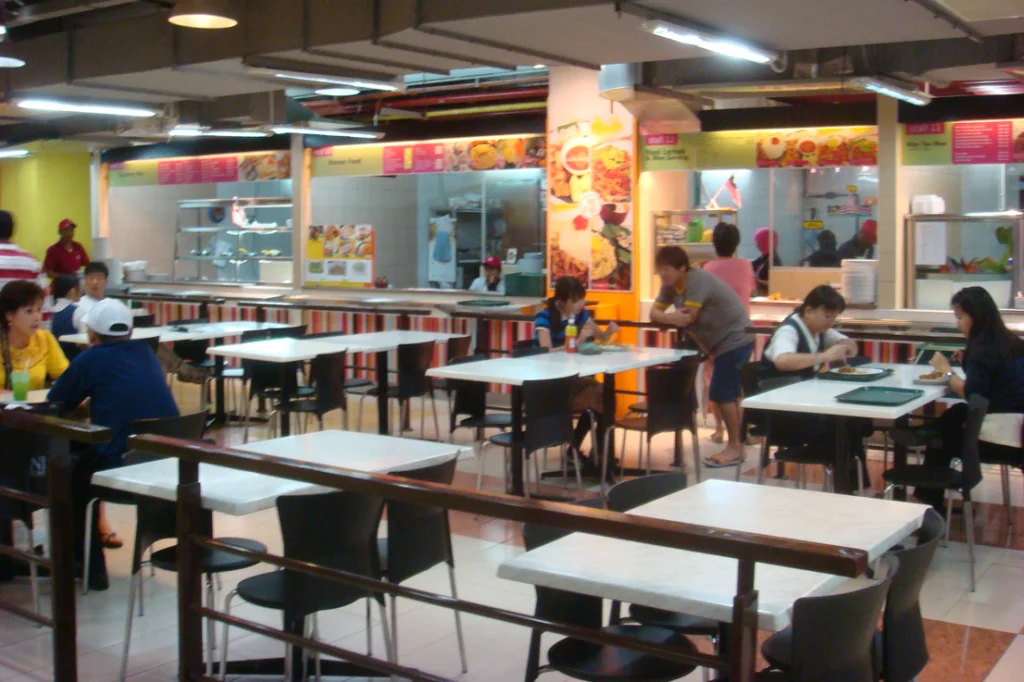
Mall food courts provided crucial first employment opportunities where generations of teenagers learned customer service skills while earning spending money within their social hub. The distinctive uniforms, name tags, and specialized equipment created professional identities that helped young people transition into workplace responsibilities while remaining connected to peer culture. Working food court jobs taught valuable life skills—from handling money to managing difficult customers—in environments where managers understood they were shaping future workers.
The social dynamics of having friends visit your workplace created unique intersections between personal and professional worlds that helped teenagers navigate early career experiences. Food court employment often created lasting friendships among coworkers from different schools and neighborhoods who might otherwise never have connected. While food service remains a common first job category, the decline of malls has eliminated these particular employment ecosystems that allowed young people to work where they already spent their leisure time.
14. Watching Shoppers Ride Multi-Level Escalators

The architectural marvel of multi-level mall escalators created natural people-watching vantage points that became unofficial entertainment for tired shoppers taking breaks on nearby benches. These mechanical rivers of humanity turned everyday shoppers into unwitting performers in an ever-changing pageant of consumer culture. The gentle hum of moving stairs provided a soothing soundtrack for contemplative moments between shopping destinations.
Escalators transformed vertical movement through retail space into a shared ritual where unspoken rules governed behavior—stand right, walk left, don’t run, face forward. The momentary vulnerability of stepping on or off moving stairs created micro-interactions where strangers helped each other navigate transitions, particularly when elderly shoppers or parents with strollers needed assistance. While escalators themselves remain in many retail environments, the particular experience of mall escalators—connecting distinctly themed floors and serving as central architectural features—has diminished as traditional enclosed malls have declined.
The mall wasn’t just a collection of stores—it was a complex social ecosystem where many of us navigated the transition from childhood to adolescence, spent first paychecks, experienced fragments of independence, and created memories with friends and family. While online shopping offers convenience and selection that physical retail can’t match, it can’t replicate the multisensory, communal experience that made malls cultural landmarks for generations. These extinct mall experiences remind us that shopping once required physical presence, human interaction, and shared space—elements of community that digital commerce continues to reimagine but can never truly replace.


